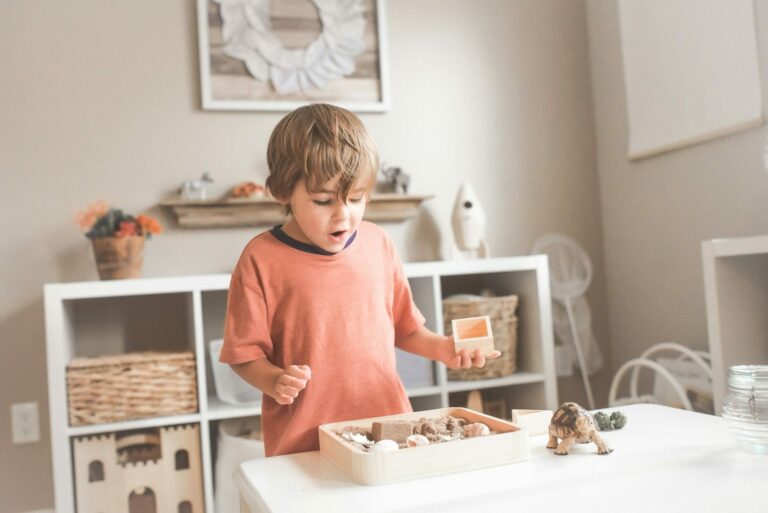Parental anxieties about developing child’s self esteem are persistent, often surfacing late at night—buried under a pile of school notes, sports reports, or just lingering in moments of quiet. Is your little one unusually harsh on themselves after a failed attempt in a new activity? Do the eyes drop at the slightest criticism or a sibling’s accomplishment? The need to cultivate robust self-respect, emotional resilience, and belief in individual worth can feel as complex as assembling a puzzle. Recognising that self-esteem is neither fixed nor a product of luck, parents seek practical approaches, reliable information, and medical clarity. From nurturing early years to steering through peer pressures and digital storms, every parent desires to safeguard their child’s confidence. Here, we unravel the dynamics that shape self-esteem: scientific findings, family bonds, school realities, social tides, screen influences, and cultural nuances. Plus, discover how small, mindful interactions—your listening ear, a gentle nudge after disappointment, praising perseverance—craft a foundation for lifelong well-being.
Understanding Self-Esteem in Childhood: What Shapes a Child’s Sense of Worth?
Developing child’s self esteem is about much more than just flattery or empty compliments. At its heart, self-esteem refers to the way children assess their own value, capability, and potential for growth. In clinical psychology, self-esteem can be defined as a child’s overall subjective sense of personal worth or value.
What Is Self-Esteem in Children?
While psychologists may use terms like “self-concept” or “self-efficacy,” for practical parenting, it comes down to how children perceive their successes, handle their weaknesses, and feel loved despite imperfections. Several peer-reviewed studies highlight that self-esteem is a dynamic, evolving trait—it ebbs and flows with new experiences, parenting styles, and social interactions. A strong sense of self-worth allows a child to face setbacks, embrace challenges, and relate confidently to peers or adults.
Parents often ask, “Is it about being the best?” Absolutely not. Rather, it’s about valuing the journey, relishing effort, and accepting that stumbling is part of progress. Neurodevelopmental research points out that early affectionate interactions, encouragement, and genuine appreciation activate brain regions associated with trust, safety, and emotional regulation. Over time, these moments add up—each affirmation, each empathetic listening session becomes part of the scaffold on which self-esteem is constructed.
Why Does Self-Esteem Matter?
A robust developing child’s self esteem trajectory has measurable effects:
- Reduced risk of anxiety and depressive symptoms, as confirmed by pediatric psychiatry studies.
- Greater academic engagement and perseverance—children are more likely to try again, even after setbacks.
- Healthier social connections, developed through a sense of acceptance and confidence in groups.
- Stronger decision-making skills, essential as children face age-appropriate choices and peer influences.
Conversely, low self-esteem can manifest through chronic self-doubt, avoidance of new situations, or excessive sensitivity to criticism. If these signs persist without intervention, the child’s mental health, academic path, and even physical health outcomes can be affected.
The Pathway of Developing Self-Esteem: What the Science Says
Early Childhood: The Power Of Attachment and Recognition
Neonatal studies on attachment theory underscore the critical nature of responsive caregiving. When infants’ needs are met reliably—whether through touch, voice, or eye contact—the neural networks controlling trust and stress regulation mature optimally. This emotional safety forms the bedrock of healthy self-esteem.
In the toddler years, milestones like independent walking or speech—met not with ridicule, but with celebration—lay down memories associated with capability and autonomy. Here, even minor acts such as stacking blocks or singing a rhyme carry immense value.
School Age: Social Comparison and Academic Achievement
Once children enter formal learning environments, the emphasis shifts. Educational psychology highlights the role of “self-appraisal”—comparing abilities to peers, receiving feedback from teachers, and achieving incremental successes. When teachers and parents offer feedback focused on effort rather than innate intelligence (“You worked so hard on your drawing!”), it supports growth mindset, as suggested by research from Dr. Carol Dweck and others.
Peer inclusion—friendships, group work, belonging to teams—also nourishes confidence. However, persistent exclusion or bullying, if unaddressed, leads to increased rates of negative self-appraisal and social withdrawal.
Adolescence: Identity, Autonomy, and Resilience
During adolescence, the scenario becomes more intricate. Biological changes in the adolescent brain, especially within the prefrontal cortex, heighten sensitivity to peer evaluation and cultural expectations. Supportive family environments, open channels of communication, and encouragement of autonomy (the right to make decisions within safe boundaries) buffer against the dips in self-esteem that may come with this stage.
Key Influences on Self-Esteem: The Web of Interactions
Family Dynamics and Parenting
The interplay of warmth, realistic boundaries, and encouragement forms the backbone of developing child’s self esteem. Clinical evidence suggests that children who experience affectionate, attuned parenting (where failures are met with guidance, not condemnation) show higher levels of self-regulation and emotional intelligence.
Conversely, chronic criticism, neglect (intentional or unintentional), or absence of constructive feedback can leave enduring marks. Pediatric health professionals advocate for attentive listening—when children share triumphs or frustrations, parents can mirror back empathy, reinforcing the child’s sense of value.
School Experiences and Teacher Support
Educational settings matter—a great deal. Supportive teaching methods, tailored feedback, and meaningful extracurriculars promote a sense of belonging and capability. Where school feels like an arena of competition, or when negative labeling occurs, a child may lose interest or confidence. When teachers encourage participation, acknowledge each child’s progress, and create inclusive classrooms, they become joint architects of strong self-esteem.
Peers, Social Groups, and Friendships
Children flourish when friendships are nurturing, inclusive, and built on mutual respect. Social learning theory emphasizes the role of modeling—children internalise behaviors they observe in their peers. Repeated exclusion or bullying, however, raises the risk for long-term self-esteem struggles. Safe, guided opportunities for group play, team sports, or collaborative classrooms can tip the scale toward resilience and self-acceptance.
Media Exposure, Technology, and Online Worlds
Screens now weave through the fabric of childhood. While access to supportive online communities can foster belonging, the risk of negative self-comparison escalates—a phenomenon amplified by image-driven social media. Repeated exposure to filtered perfectionism or cyberbullying episodes can spike anxiety and lower self-worth. Pediatricians recommend clear digital boundaries, media literacy discussions, and active parental involvement in online activity—these interventions serve as psychological safety nets.
Cultural Context and Social Environment
A child’s socio-cultural environment also influences self-perception. Acceptance within cultural or religious groups strengthens identity and pride. When a child faces societal prejudice or socioeconomic disadvantage, family and community support act as a shield, buffering against harmful messages and nurturing resilience.
Signs That Indicate How Your Child Views Themselves
Hallmarks of Healthy Self-Esteem
- Expressing opinions freely, engaging confidently with peers and adults.
- Willingness to try new experiences, without paralysis from fear of failing.
- Valuing small achievements and constructive self-talk.
- Maintaining friendships, taking on challenges, accepting feedback.
- Showing self-discipline—following rules, handling disappointment, or apologizing after mistakes.
Warning Signs: When Self-Esteem Falters
Watch for patterns beyond occasional moodiness:
- Persistent negative self-talk (“I’m no good at anything”).
- Withdrawal from group activities, avoidance of hobbies once enjoyed.
- Intense fear of criticism, reluctance to try anything new.
- Frequent giving-up or lack of motivation, even for enjoyable pursuits.
If these signals persist, especially alongside sleep disruption, appetite changes, or social isolation, consulting a pediatrician or child psychologist is indicated. Brain imaging and psychometric testing can help tailor interventions.
Everyday Actions for Building Stronger Self-Esteem
Foster Participation and Responsibility
Encourage children to join decision-making—what to wear, which vegetable to try, or which story to read at night. These choices, however mundane, communicate respect and affirmation. Assigning age-appropriate chores, with gratitude for effort (not just results), instills confidence in capability and fuels a sense of belonging within the family unit.
Celebrate Effort—Not Only Outcomes
Medical and psychological research stresses the power of praising effort, not just success. Discussing the steps taken (“You practiced that song every evening!”) overrides the pressure for perfection. Share your own stories of setbacks and learning—children internalise the idea that failure is a stepping stone, not a final judgment.
Accentuate the Small Wins
A child who ties shoelaces for the first time or remembers to feed a pet without prompting needs sincere celebration. Micro-achievements, when spotlighted by parents, create ripples that last a lifetime. Over time, this habit wires the brain to seek progress, not just applause.
Be An Attentive Listener
Active listening means more than nodding—it’s about absorbing a child’s words, feelings, and underlying worries. Pediatric therapists highlight how reflective listening (“It sounds like you’re upset about what happened at lunch—do you want to talk more?”) validates the child’s inner world, enhancing attachment.
Steer Clear of Comparisons
No two children are carbon copies—talents, timelines, temperaments all vary. Medical literature increasingly warns that repeated sibling or peer comparisons breed resentment, anxiety, and lingering doubt. Focus instead on each child’s unique journey, emphasizing personal growth and grit.
Model Your Own Self-Acceptance
Children decipher far more from observation than from lectures. Show how you handle setbacks (“That dinner didn’t turn out well, but I’ll try again!”), acknowledge mistakes without self-deprecation, and accept compliments gracefully. These daily actions serve as silent lessons in self-regard.
Cultivate a Growth Mindset
The “growth mindset” concept, popularized by psychological studies, champions the belief that intelligence, talent, and ability are not static qualities. Guide your child to see difficulty as opportunity (“This puzzle was tough, but your strategies kept improving”), rather than as threats to self-worth.
Set Realistic, Developmentally-Appropriate Expectations
It’s tempting to expect rapid progress, but children follow developmental timelines unique to their genetics, environment, and temperament. Parent–teacher collaboration can ensure goals align with a child’s actual readiness, reducing frustration for everyone involved.
Offer Choices and Value Involvement
Everyday decisions, such as choosing between two outfits or helping pack a school bag, plant the seeds of autonomy. Inclusion in routines (from watering plants to stirring dosa batter) shows that their actions are meaningful to the family’s rhythm and success.
Refrain from Harmful Criticism
Separate deeds from identity—“Throwing the ball inside broke the vase” rather than “You’re so careless.” Constructive feedback, focused on the how and not the who, allows a child to grow without shame.
Encourage Pursuits, Passions, and Play
Sports, music, crafts, and volunteering open doors to new friendships, skill development, and achievement. Participation matters more than medals. When parents highlight the learning journey, not just first-place finishes, children embrace challenge and learn to redefine “success” beyond just trophies.
Effective Communication: Keys to Nurturing Resilient Self-Esteem
Active Listening and Emotional Validation
When a child shares joy or disappointment, meet them with undivided attention—“I can see that missing the school bus really upset you.” Clinical paediatrics documents that validation—acknowledging, not immediately fixing feelings—promotes emotional literacy and internal trust.
Constructive Feedback
Feedback works best when targeted to behavior and effort. Instead of “You’re bad at maths,” try, “Those multiplication tables are tricky; what helped last time?” This builds safety in learning, supporting risk-taking and growth.
Power of Positive Language
Specific praise—“You solved that maths problem by trying new methods!”—anchors memories of success. Steer away from vague reassurances (“Good job!”) and avoid submerging a child in negative self-definitions.
Activities Proven to Strengthen Self-Esteem
Creative Arts and Free Expression
Arts-based therapies are widely shown to improve self-esteem in paediatric populations. Drawing, painting, playing instruments—these activities allow for emotional release, skill mastery, and pride in creation.
Team Sports and Group Hobbies
Physical activities and group hobbies build cooperation, discipline, and trust. According to research in developmental psychology, these social experiences foster leadership, camaraderie, and grit.
Journaling and Self-Affirmation
Encouraging a child to keep a journal, even if it’s only a few sentences a week, helps process emotions, reflect on achievements, and track progress. Affirmations—short, positive statements repeated daily—boost self-regard, especially when reinforced by parent participation.
Volunteering, Helping Others
Altruistic activities—helping with chores, caring for pets, community service—connect contribution to self-worth. Child development research points out that children who engage in acts of kindness experience elevated mood and confidence.
Handling Setbacks, Perfectionism, and Seeking Extra Support
Responding to Bullying or Discrimination
If your child reports bullying or exclusion, respond promptly and empathetically. Acknowledge their feelings, validate their distress, and collaborate with teachers or counsellors. Building supportive peer networks—clubs, sports, cultural groups—helps fortify self-worth against external negativity.
Navigating Perfectionism and Comparison
Contemporary paediatric studies warn against perfectionist tendencies: children who fear making mistakes may avoid participation altogether. Model how to tolerate imperfection—share your own stories and point out growth in the face of difficulty.
When to Seek Professional Input
If low self-esteem interferes with daily functioning—persistent sadness, withdrawal, severe anxiety—schedule an assessment with a paediatrician or clinical psychologist. Early intervention, whether through therapy or supportive school programming, can put struggling children back on a path to healthy self-esteem.
Key Takeaways
- Developing child’s self esteem is a daily process shaped by empathy, encouragement, honest feedback, and genuine listening.
- Small, repeated parental actions—making space for choices, celebrating effort, staying present in moments of failure—accumulate into lifelong confidence.
- Teachers, peers, communities, and cultural context all matter; a child’s environment must echo what’s modeled at home.
- Professional support is available for persistent struggles; early help matters. Use resources, collaborate with teachers, and stay open to paediatric advice.
- For tailored health advice and free child health checklists, download the application Heloa.
Questions Parents Ask
How can I help my child build self-esteem if they constantly compare themselves to others?
Children naturally tend to notice differences, especially as they grow and their social world widens. Redirect their attention to their own progress—however small—and celebrate unique abilities. Remind your child often: everyone’s journey moves at a different pace. Your consistent support and reassurance reinforce that their value is not determined by peer comparison, but by their individual efforts and growth.
What are some daily activities that can support my child’s self-esteem?
Let your child make routine choices, participate in family decisions, or help in small tasks—from stirring sabzi to picking out a book. Creative activities—arts, crafts, music—open doors to self-expression and discovery. Prioritise group games that focus on enjoying the process rather than only winning. Share daily affirmations together, and end the day reflecting on small successes, no matter how modest.
How do I handle my child’s low self-esteem after experiencing failure or setbacks?
Listen first, without quick judgments. Empathise with their disappointment, and gently discuss what lessons the experience might offer. Explain that everyone faces setbacks; it’s a normal part of learning and growth. Encourage your child to persevere and try again, letting them know that your love and pride depend on their effort, not on never making mistakes. Your calm confidence teaches resilience more powerfully than words alone.









